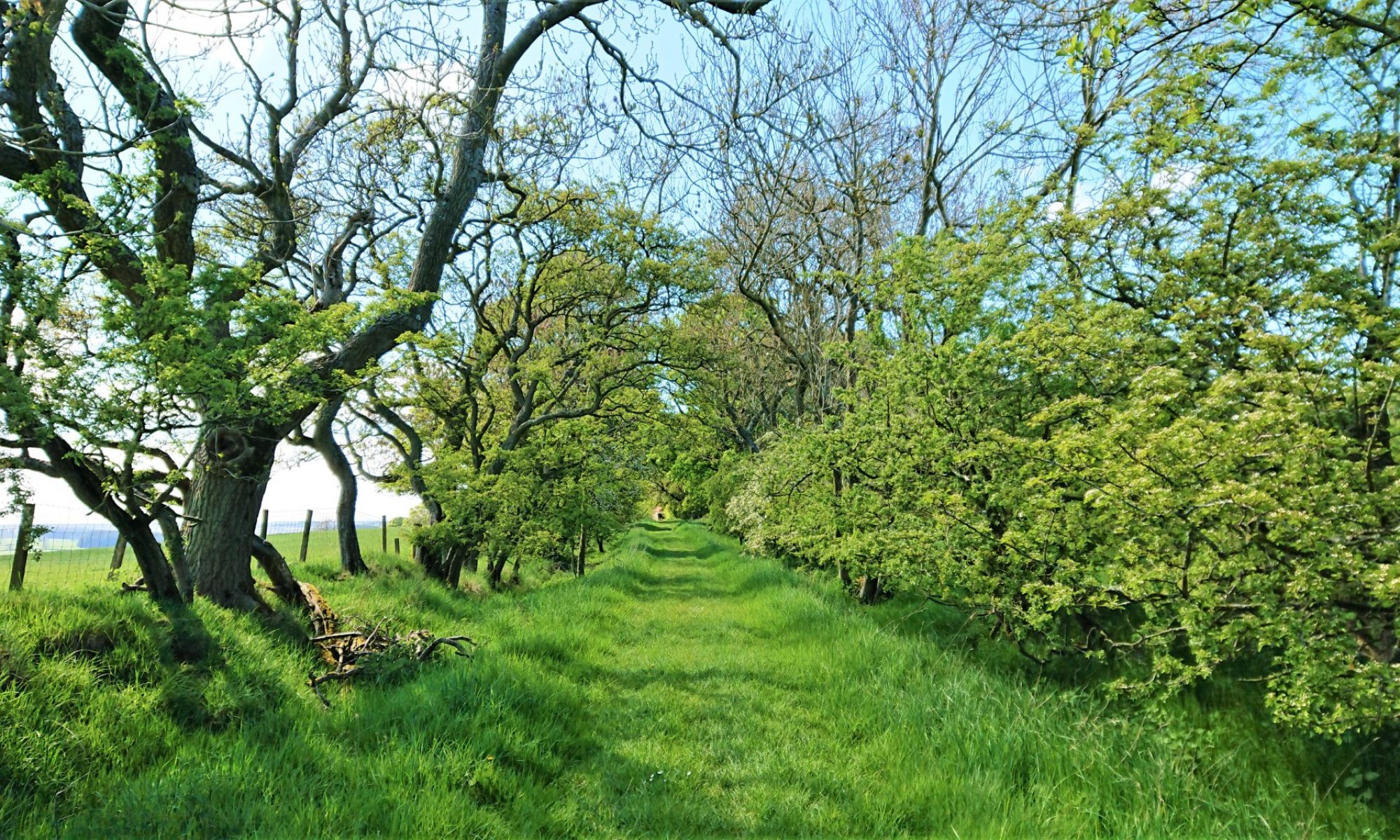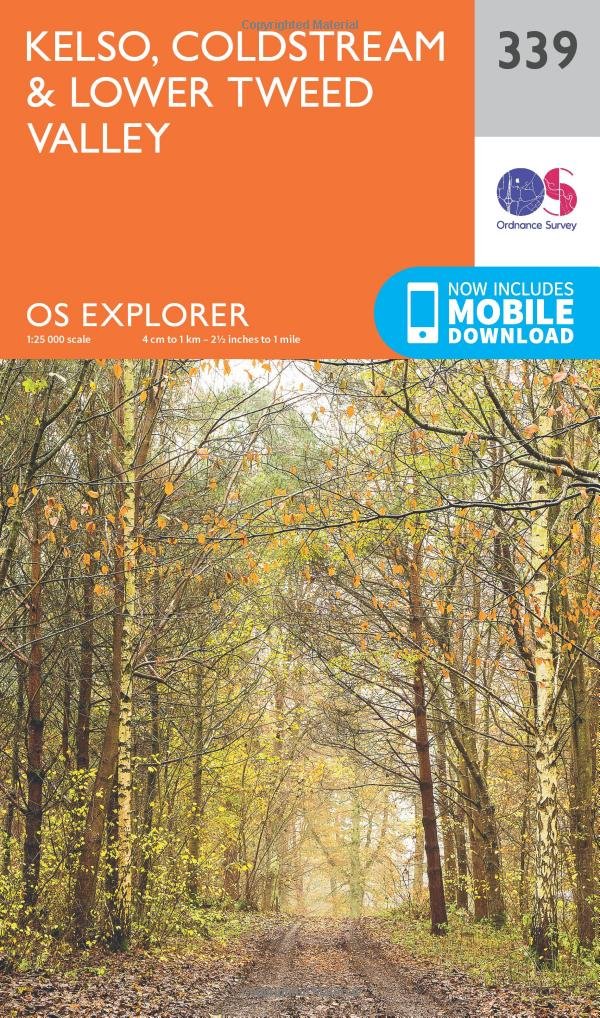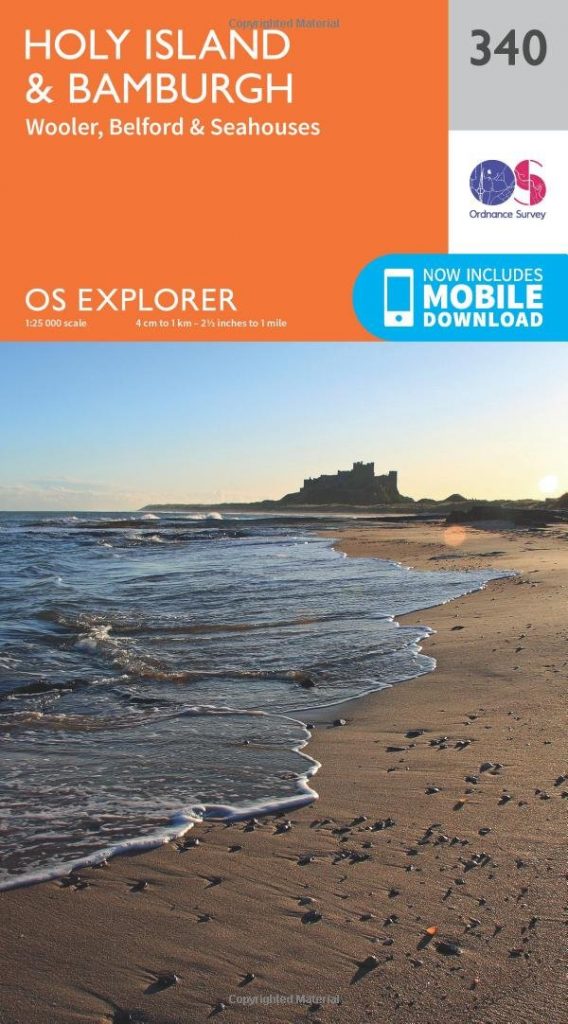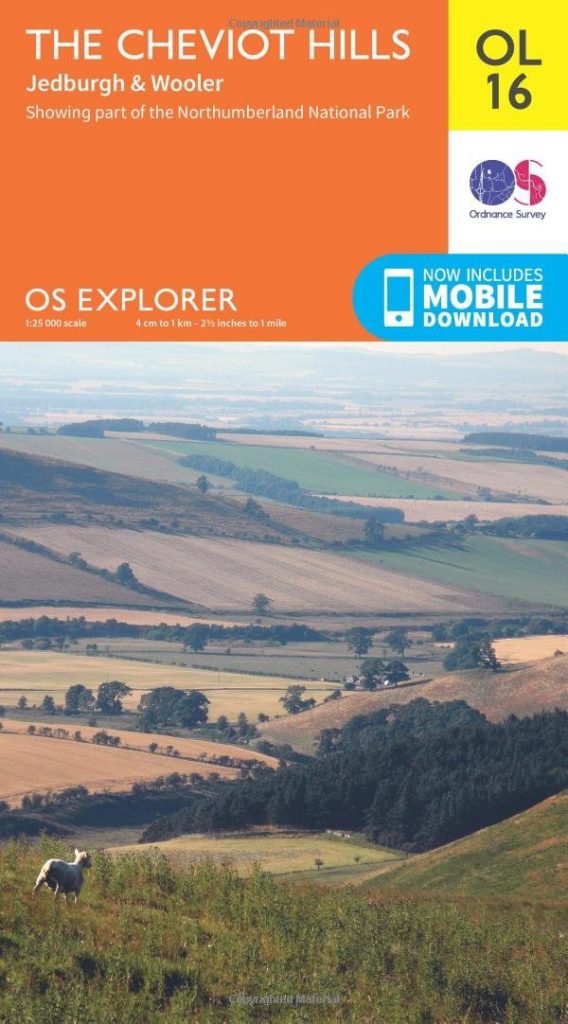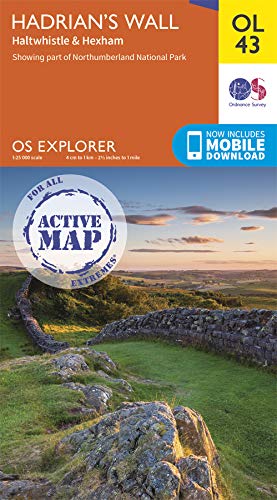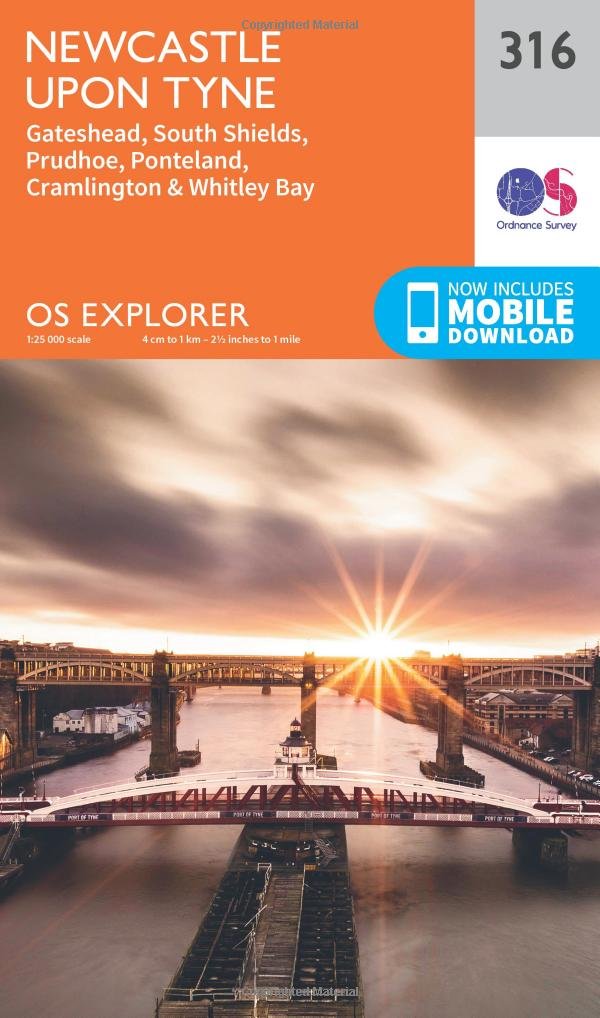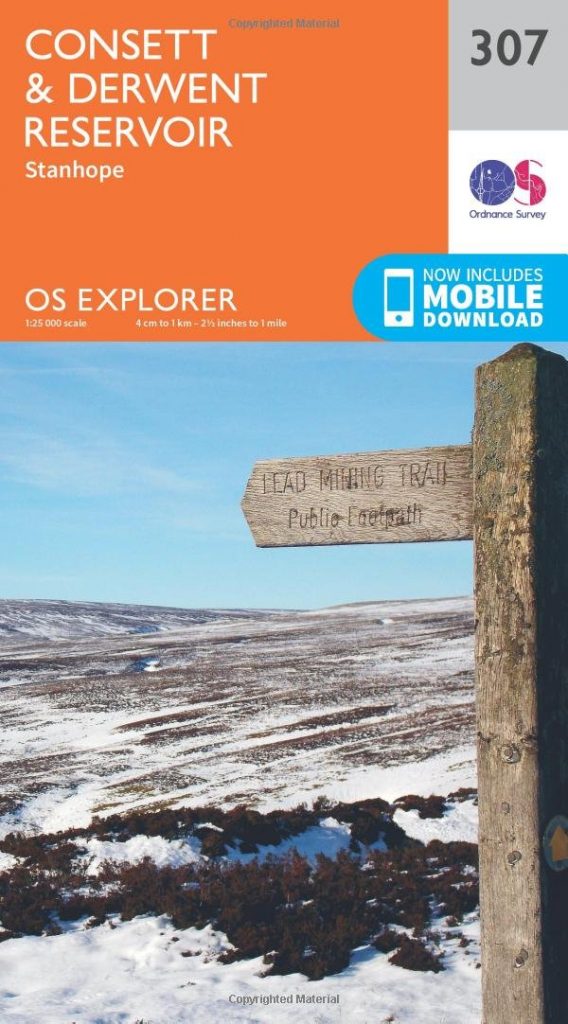Following on from the first post in this series on OS Maps of Northern England, this is the Northumberland one. In this post I will look at what maps cover Northumberland and what the interesting features are on each. I will also highlight which maps cover the Northumberland National Park.
Other articles in this series:
- OS Maps of Northern England – Intro
- OS Maps of Northern England – Cumbria
- OS Maps of Northern England – Tyne & Wear
- OS Maps of Northern England – Durham
- OS Maps of Northern England – North Yorkshire
Declaration: We are a participant in the Amazon Services LLC Associates Program, an affiliate advertising program designed to provide a means for us to earn fees by linking to Amazon.com and affiliated sites.
Northumberland is the sixth largest county in England, by area, so it needs a lot of maps. Most visitors might not believe how big it really is, as the majority of this county is largely uninhabited and the main tourist centres are close to the coast. The Cheviot Hills occupy a great deal of North Northumberland and Kielder Forest takes up a huge area in the southern part of the county.
There is one National Park, the Northumberland National Park, and it is entirely in Northumberland. The northeastern border of the park is the English border with Scotland and the southern border of the park is adjacent to Hadrian’s Wall.
Northumberland is peculiar in that there are no cities in the county. Newcastle upon Tyne was once in Northumberland but this ceased in 1400. It is now in Tyne & Wear. The administrative centre is actually Morpeth.
OS Grid references
In the text beside the maps, I have added some OS Grid References. These are the figures with two letters, followed by six numbers. If you’re familiar with OS maps, you’ll know what they are. If not, no matter. The Ordnance Survey have a great beginner’s guide to OS Grid References. Anyway, each one of these Grid References is a link. If you click it, it will open the OS online map and centre on the place linked to the reference. Try this one (NT 909 205). It is the triangulation point at the top of The Cheviot.
The maps
In all, it takes eleven maps to cover the county. Three maps, Explorer OL16, OL42 and OL43, specifically cover the Northumberland National Park. One for each of the major geographical features of Northumberland, The Cheviot Hills, Kielder Water and Forest, and Hadrian’s Wall, respectively. Explorer maps 346 and 339 cover the beautiful and verdant Tweed Valley. Explorer maps 340, 332, 325, 316 cover the entire Northumberland coast, with some of the best and least visited beaches in the country. Finally, Explorer maps OL31 and 307 cover the southern edges of the county, bordering Cumbria and Durham.
- OS Explorer 346 Berwick upon Tweed
- OS Explorer 339 Kelso, Coldstream & Lower Tweed Valley
- OS Explorer 340 Holy Island & Bamburgh
- OS Explorer OL16 The Cheviot Hills
- OS Explorer 332 Alnwick & Amble
- OS Explorer OL42 Kielder Water & Forest
- OS Explorer 325 Morpeth & Blyth
- OS Explorer OL43 Hadrian’s Wall
- OS Explorer 316 Newcastle upon Tyne
- OS Explorer OL31 North Pennines
- OS Explorer 307 Consett & Derwent Reservoir
Where to buy OS Maps of Yorkshire
The maps are available in both paper and electronic form and from many sources. For convenience though, they are available on Amazon and at very reasonable prices. All of the maps below are linked directly to the maps available from Amazon. Just click on them and you can quickly have them delivered directly to your address.
Gazetteers
I have prepared a gazetteer to allow you to check which map that towns and villages are on. I have also prepared a gazetteer with details of Cheviot hills. However, because they are all on the Explorer OL16 map, there is no need to add a map reference.
OS Explorer 346 Berwick upon Tweed
Only the bottom right corner of this map actually covers part of Northumberland. It is an important part though. Berwick upon Tweed and the area immediately around it.
Berwick is the northernmost town in England. If you look closely, on the map, you’ll see the town walls, which make a lovely walk.
There are four bridges over the River Tweed here. We’ll ignore the A1 bridge though, as it’s not that pretty. Berwick Bridge is the oldest bridge. It is 17th century and there were various bridges there prior to this one. The next one along is the Royal Tweed Bridge, which was built in the 1920’s and used to carry the A1. The next is my particular favourite, the Royal Border Bridge. It was built in the mid 19th century to carry the railway north and was designed by Robert Stephenson and opened by Queen Victoria.
This map also shows the beautiful section of the River Tweed between the Union Chain Bridge and Berwick. This is a particularly lovely walk.
As a bonus you get some great parts of Scotland, especially the area around Eyemouth and St Abbs. St Abb’s Head is definitely worth a visit.
OS Explorer 339 Kelso, Coldstream & Lower Tweed Valley
Another map charting the River Tweed. On the Northumberland side, there is the picturesque and historically interesting Twizelbridge area. A little further up the river is Norham, which has the very historic Norham Castle, that is managed by English Heritage and free to visit. Twizelbridge does have a bridge and a very historical one at that. Built in the 16th century, it was used on many occasions in battles between the Scots and the English.
Further to the east are Ford and Etal. Very close to the Flodden Field battlefield, Etal has a castle and a miniature railway, which takes you to Heatherslaw Mill, a working flour mill driven by a waterwheel on the River Till. Not too much further is Ford. Ford Dates from before the 11th century but was remodelled into the estate village it is now, by Lady Waterford in the 19th century.
Also on this map is Duddo stone circle, about 1km north of Duddo. This Bronze Age circle is the only standing stone circle that I know of in Northumberland.
OS Explorer 340 Holy Island & Bamburgh
This map has, in my opinion, many of the best bits of the Northumberland coastline. It includes both the wonderful Holy Island, also known as Lindisfarne, and Bamburgh, with its impressive castle.
Holy Island has a great deal of history. It has strong associations with St Aiden and St Oswald but is most famous for being the home of St Cuthbert. It is the start of St Oswald’s Way and the end of St Cuthbert’s Way long distance walking routes.
Lindisfarne Priory was founded by King Oswald (later Saint Oswald) and Aiden. Cuthbert was Prior here some decades later. After the Priory went out of use, Lindisfarne Castle was built to defend this area against attack. Parts of it were built from the remains of the priory.
The Pilgrim’s Causeway, over to Holy Island, is a fabulous walk but make sure you can read the tides.
Bamburgh beach is amazing and it is possible to walk all the way to Seahouses from Bamburgh.
The town of Wooler is included on this map, just. The map requires a small bulge in the bottom left corner to get it in. This market town is the focal point for many walks into the Cheviots.
The final third of the 63 mile St Cuthbert’s Way is included in this map. This section stretches between Wooler and Holy Island. It passes by St Cuthbert’s Cave and the final part crosses the Pilgrim’s Causeway to Holy Island.
The most Northern point of the Northumberland Coast Path is at Berwick but it continues on right through this map.
OS Explorer OL16 The Cheviot Hills
As its name suggests, this is the map for the Cheviot Hills. It covers the Northern part of the Nortumberland National Park, hence the OL or Outdoor Leisure name. Although, there is a tiny bit of National Park, to the north, that falls into Explorer 339.
Apart from a short section in Scotland, the majority of St Cuthbert’s Way is covered on this map. A large portion of this long distance walking route crosses the Cheviots to Wooler.
The Cheviot and Hedgehope, the two tallest peaks in the Cheviots, dominate the top right of the map. Whilst those two are not on the English/Scottish border, many of the other major peaks are. The border runs down the left half of the map. Several of these Cheviot peaks are actually a few metres over the border, in Scotland.
The bottom part of the map covers the upper part of the Coquet Valley. This is a lovely and very popular area for walking. Many of the peaks are accessible from here.
The Otterburn Ranges occupy the bottom left of the map. This area is Ministry of Defence land but it can be accessed when exercises are not taking place.
OS Explorer 332 Alnwick & Amble
This is the second of the smaller maps covering the Northumberland coast. The settlements dominate this map. Craster and Amble on the coast, Alnwick in the centre of the map and Rothbury hanging onto the map at the bottom left.
Craster is in the top right of the map. This is a lovely traditional fishing village, famous for its kippers. It’s a must stop on the Coastal Path.
Probably the most famous town in Northumberland is Alnwick. Obviously, it has a great deal of history and is the seat of the Duke of Northumberland. It’s the association of Alnwick Castle with Harry Potter that dominates now. Regardless, the castle and the Alnwick Garden are well worth a visit.
Amble is another fishing harbour but bigger than Craster. It was nicknamed “The Friendliest Port”, which is thought to arise from a telegraph conversation with the Mauretania as it headed along the coast.
The village of Warkworth is situated on a loop of the Coquet River, just inland from Amble. This village is dominated by Warkworth Castle, high up on the hill above the village.
Lastly, Rothbury just sneaks onto this map. A bulge is required in the bottom left corner of the map. This pretty little village is the gateway to the Coquet Valley and the last chance to buy provisions for your day in the Cheviots.
OS Explorer OL42 Kielder Water & Forest
This is the second of the Explorer Outdoor Leisure maps that cover the Northumberland National Park. This time the majority of the map is Kielder Water and Forest.
The map is a peculiar shape, being taller on eastern side. This is mainly to ensure that the entirety of the Simonside Hills, which is in the National Park, is included.
Rothbury is also included on this map, albeit in a small bulge at the very top right.
Kielder Water is the largest man-made lake in the UK and it also has the largest hydroelectric plant in England. Apart from being a vital source of water for the region, it is a popular leisure area and is a Dark Sky Park, hence the location of Kielder Observatory.
This map includes the whole Wallington Estate. At over 13,000 acres, this is one of the largest National Trust estates in the country. The gardens and house are well worth a visit and the wider area of the estate provide some great walking.
Close to Wallington is a small hamlet called Kirkharle. The significance of Kirkharle is that it is the birthplace of Lancelot “Capability” Brown, the famous landscape architect.
OS Explorer 325 Morpeth & Blyth
This is the third of the maps covering the Northumberland coast and it includes the wonderful Druridge Bay, as well as the more urban beaches of Newbiggin-by-the-sea, Cambois and Blyth. Also, the lower part of the Coquet valley creeps in at the top of the map. Morpeth, the administrative town of Northumberland is at the bottom.
At around 9km in length, Druridge Bay is the longest single length of sand on this coast. It is perfect for a long walk and is relatively quiet away from the tourist hot spots. The Drift Cafe at Cresswell and the Country Park do provide facilities though.
The Lower half of the map shows what were the coal fields North of Newcastle. That is gone now but the area has adjusted to new industries. The remnants of the huge Blyth Power Station can be seen at Cambois and the Aluminium Smelter at Lynmouth is still active.
Blyth is the largest town in Northumberland and is a very active port, especially in the offshore industry.
Morpeth is situated on the Wansbeck River and is the administrative centre of Northumberland. It’s not just that though. It’s a very historical place. The castle dates to the 11th century.
OSExplorer OL43 Hadrian’s Wall
The last of the maps covering the Northumberland National Park. The area covered borders Cumbria, with its main focus being Hadrian’s Wall. There are plenty of other interesting places on this map though.
Hadrian’s Wall speaks for itself. It is too big a feature to do justice here. This 73 mile Roman wall, with it’s associated settlements is a UNESCO World Heritage Site. What more can I say? Go there.
This map contains the end of St Oswald’s Way, at a tiny chapel called St Oswald’s Church. This is located at Heavenfield, just North of the village of Wall. The church sits within a walled enclosure by itself. It is open to the public.
Hexham is probably most famous for being a market town although horse racing fans will know the race course. It also has an abbey, which was created by Bishop Wilfrid, later St Wilfrid, around the time that Cuthbert became Prior of Lindisfarne. This abbey was attacked by William Wallace just over 600 years later.
The River Allen has its source on Explorer OL31 but it has its end on this map. At the very scenic National Trust Allen Banks it joins the River Tyne. A little further up river is the town of Allendale. This is a centre for walking in this area and gives access to Isaac’s Tea Trail.
OS Explorer 316 Newcastle upon Tyne
The bottom right of this map is part of Tyne & Wear but the rest is Northumberland.
Ponteland is just within the Northumberland county boundary. Newcastle Airport is just the other side of the boundary.
About 5 miles northwest of Ponteland is the village of Belsay. English Heritage manages Belsay Hall, Castle and Gardens here. It’s a lovely place to visit.
Seaton consists of two villages, Seaton Delaval and Seaton Sluice. Seaton Delaval gets its name form the Delaval family associated with this area. Seaton Deleval Hall is now managed by the National Trust. Seaton Sluice is on the coast. It got its name from the sluice gates that trapped the sea water at high tide, which was used to flush the sand out to the harbour at low tide.
The rest of this map will be covered in the article on Tyne & Wear.
OS Explorer OL31 North Pennines
This is an Outdoor Leisure map but it doesn’t cover a National Park in Northumberland.
This map shows the source of the Allen Rilver, which flows through Allendale and Allen Banks into the South Tyne. The main source is at Allenheads. This was a centre for lead mining in the late 19th century but this only lasted around 20 years.
Allenheads in situated on the C2C coast to coast cycle route. I remember staying here when I cycled this route back in the 1990s. The Allenheads Inn, at the centre of the village, is great place to stay and enjoy refreshments after a day out in the area. There is actually a Ski Centre at Allenheads. It’s not exactly the Alps but in most winters it can offer some snowboarding and skiing.
Towards the left of the map is the South Tyne river. This is a popular area for walking, with the Pennine Way, A Pennine Journey, the South Tyne Trail and Isaac’s Tea Trail all converging here.
OS Explorer 307 Consett & Derwent Reservoir
Only a small part of this map covers Northumberland. The rest is Durham and Tyne & Wear. But the bit that it does cover includes some beautiful places. Especially the Derwent Reservoir & the village of Blanchland.
The Derwent Reservoir is split along its middle by the Northumberland/Durham county boundary. So, the North side is in Northumberland. The reservoir is fed by the Beldon Burn and is a favourite place for picnics, walking, cycling, sailing and angling.
About 2km further up the Beldon Burn is Blanchland. This lovely little village is constructed from the stones robbed from the once great abbey here. There is great walking in this area. What’s more is that The Lord Crewe Arms, a beautiful medieval hotel and pub/restaurant awaits a tired walker at the return to Blanchland.
Look out for the next in the OS Maps of Northern England series.
If you liked this post, why not take a look at the others:
- OS Maps of Northern England – Intro
- OS Maps of Northern England – Tyne & Wear
- OS Maps of Northern England – North Yorkshire
- OS Maps of Northern England – Durham
More coming soon!
